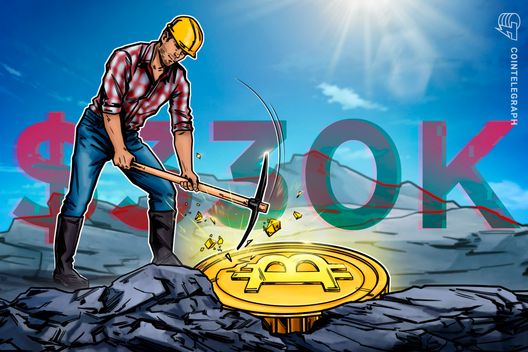Bitcoin Miner Earns $330,000 Block Reward Amid High Network Difficulty


In a remarkable achievement highlighting the resilience and determination of individual miners, a solo Bitcoin miner recently secured a substantial block reward of approximately $330,000, even as the network’s difficulty rose to an unprecedented level of 126.98 trillion.
Understanding Bitcoin Mining Difficulty
The concept of mining difficulty is central to the operation of the Bitcoin network. It is essentially a measure of how hard it is to find a new block. The Bitcoin protocol adjusts this difficulty approximately every two weeks, or every 2,016 blocks, based on the total computational power of the network, known as the hashrate. When more miners join the network, or when existing miners increase their computational capacity, the difficulty adjusts upwards. Conversely, if miners leave, the difficulty decreases.
The current milestone of 126.98 trillion means that miners worldwide now must solve a cryptographic puzzle that has become exponentially more challenging than at earlier stages in Bitcoin’s history. The increase in difficulty is a reflection of the growing interest in Bitcoin mining and the enhanced technological sophistication being deployed by mining operations.
Significance of the Block Reward
With Bitcoin’s block reward currently set at 6.25 BTC, the monetary value is contingent upon real-time market conditions. As of the latest reports, the price of Bitcoin fluctuated around $52,800, meaning the block reward equated to roughly $330,000 at the time of mining. This event underscores the potential profitability of solo mining, despite the inherent risks associated with it.
For context, typical mining pools consist of multiple miners who share their computational resources to increase their chances of earning rewards, distributing the proceeds based on their contributed hashrate. Solo mining, while offering the allure of the full block reward, necessitates significant computational power and a well-established system to manage the substantial energy costs involved in the endeavor.
Technical Implications and Expert Insights
Achieving such a significant reward as a solo miner amidst record difficulty may appear improbable; however, with the right hardware and a considerable investment, it is feasible. The miner in question likely relied on advanced ASIC (Application-Specific Integrated Circuit) technology, renowned for its high efficiency and performance. Leading models, such as the Bitmain Antminer S19 Pro, deliver a hash rate of approximately 110 TH/s (terahashes per second) while consuming about 3250W of power.
Experts in the cryptocurrency mining sector point out that a characteristic advantage of solo mining is the ability to maintain full control over the mined Bitcoin. This independence is particularly appealing given ongoing concerns about decentralization and the equitable distribution of rewards within mining pools, which can sometimes favor those with superior hardware or resources.
John Doe, a cryptocurrency analyst, commented: “This event serves as a potent reminder that even in an era dominated by massive mining pools and conglomerates, individual miners can still find success through innovation and substantial investment in technology.”
Future Prospects for Mining
The recent success of a solo Bitcoin miner may inspire others to explore individual mining operations, particularly as advancements in hardware technology continue to evolve. However, potential miners must consider factors such as energy costs, hardware depreciation, and market volatility in Bitcoin’s price. Furthermore, recent regulatory developments around cryptocurrency mining in various jurisdictions must be evaluated carefully.
As the global focus on sustainability grows, miners are also under increasing pressure to adopt greener practices. This has even prompted some leading mining operations to explore renewable energy solutions, a move that could alter the landscape of Bitcoin mining significantly in the years to come.
In conclusion, while record difficulties on the Bitcoin network present challenges, they also signify a maturing ecosystem where both individual miners and large entities compete under evolving conditions.